Get PeakVisor App
Sign In
Search by GPS coordinates
- Latitude
- ° ' ''
- Longitude
- ° ' ''
- Units of Length

Yes
Cancel
Share ×

Scan the QR code and open PeakVisor on your phone
❤ Wishlist ×
Choose
Delete
The City of Tshwane is a metropolitan municipality in the Gauteng province of South Africa. It includes the capital city, Pretoria, and a collection of surrounding towns and townships. The municipality has 51 named mountains; Spitskop is the highest point at 1,638 meters (5,347 ft), while the most prominent mountain is Magaliesberg, at 1,463 meters (4,800 ft).
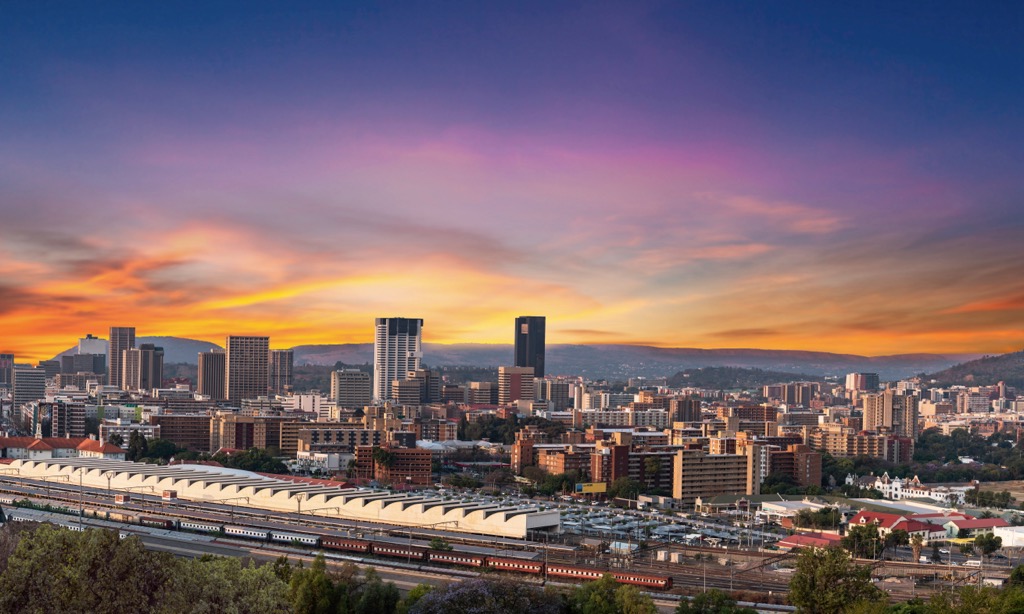
Tshwane is in the northern part of Gauteng province, 53 km (33 mi) north of Johannesburg, the economic hub of South Africa. It covers an area of approximately 629,800 ha (1,556,270 ac), making it one of the largest metropolitan municipalities in the country by area.
At the core of Tshwane is Pretoria, the administrative capital of South Africa. Known for its wide, tree-lined streets and significant historical and governmental buildings, Pretoria houses the Union Buildings, the offices of the President of South Africa.

Tshwane's position places it at the crossroads of three provinces. To the east, it borders Mpumalanga; to the north, Limpopo; and to the west, North West province. Key national routes and corridors facilitate these connections.
The region features elevations ranging from 1,200 to 1,500 meters (3,937 to 4,921 ft). The landscape includes relatively flat terrain interspersed with hills and ridges, part of the Highveld plateau, a prominent feature of the interior of South Africa.
A notable natural feature in Tshwane is the Magaliesberg Mountain Range, which runs through the northern part of the municipality. This ancient range, estimated to be over two billion years old, extends approximately 120 km (74 mi) from Rustenburg in the west to just west of Pretoria in the east.
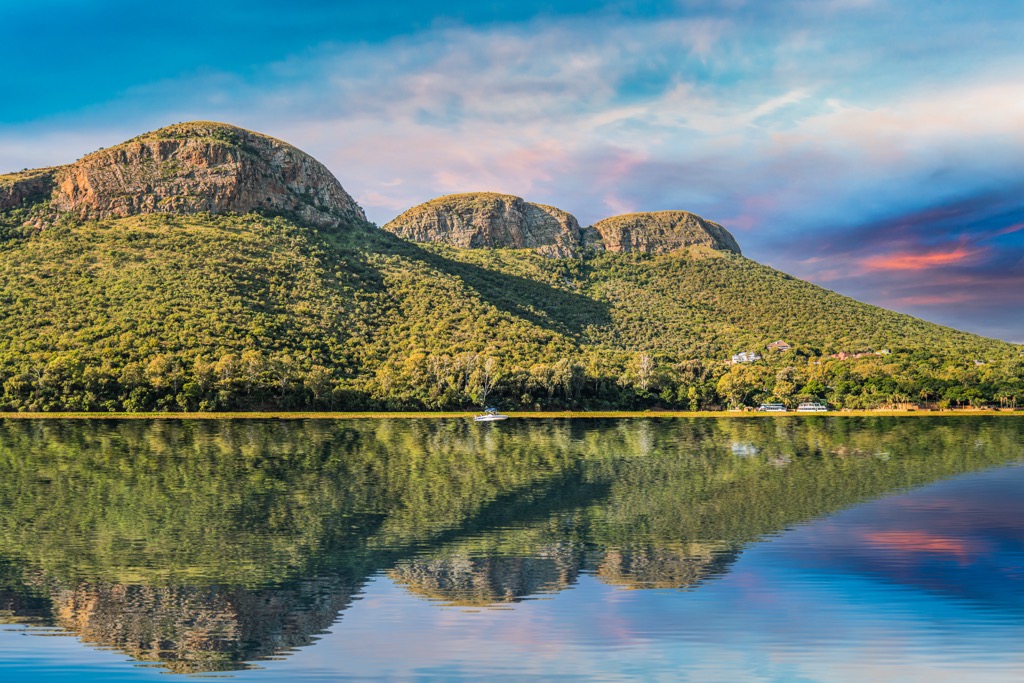
Tshwane experiences a subtropical highland climate with warm, wet summers and mild, dry winters. Summer temperatures range from 25°C to 30°C (77°F to 86°F), often with afternoon thunderstorms. Winter temperatures average 20°C (68°F) during the day but can drop to near freezing (32°F) at night.
Several rivers and streams crisscross the region. The most significant is the Apies River, flowing through central Pretoria. Other notable rivers include the Hennops River and the Crocodile River, which are essential for urban and agricultural water use. While not within Tshwane's immediate boundaries, the Roodeplaat Dam and Hartbeespoort Dam are crucial for the region's water supply.
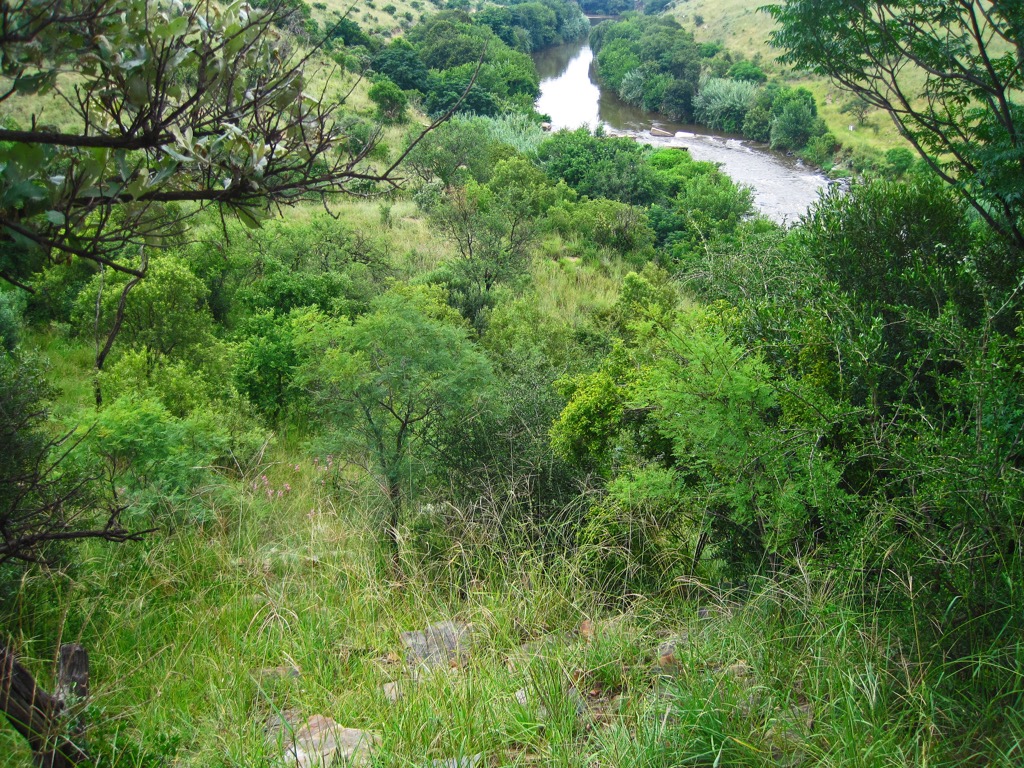
The Magaliesberg range, part of the Bushveld Igneous Complex, formed in the late Archaean and early Proterozoic eras and is rich in platinum group metals. Composed mainly of quartzite, it also features shale, dolomite, and igneous intrusions like diabase and norite.
One of the City of Tshwane’s prominent features is the Tswaing Meteorite Crater, which dates back approximately 220,000 years. The impact crater measures 100 meters deep and 1.13 kilometers across.
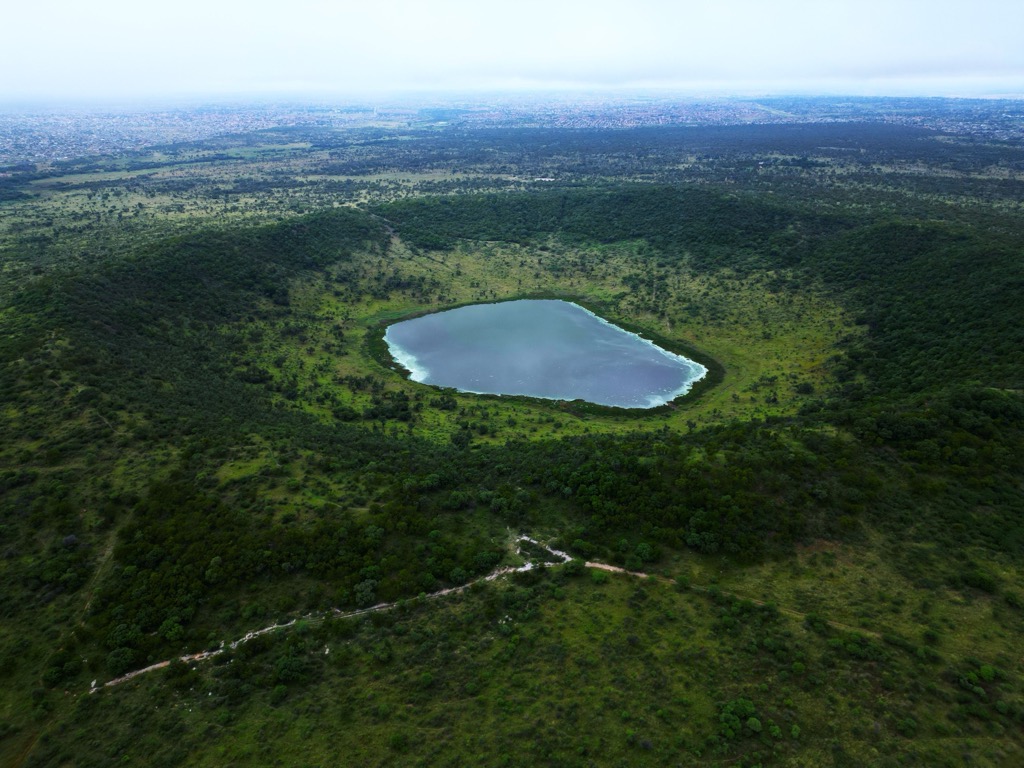
Tshwane's oldest rocks, part of the Kaapvaal Craton, date back to the Archean Eon (2.5 to 4 billion years ago). The Proterozoic era brought the Transvaal Supergroup's sedimentary rocks, contributing to the area's karst landscapes. In the Phanerozoic era, the Karoo Supergroup's sedimentary rocks were deposited in southern Tshwane, providing insights into ancient climates.
The city's biodiversity is shaped by its location in Gauteng province, its diverse topography, and its climatic conditions. Situated within the Highveld, a high-elevation plateau, the region supports a variety of ecosystems. The primary biome in Tshwane is grassland; common grasses include red grass, common thatching grass, and spear grass. These grasslands are lush and green during the rainy season and turn golden brown in the dry season.
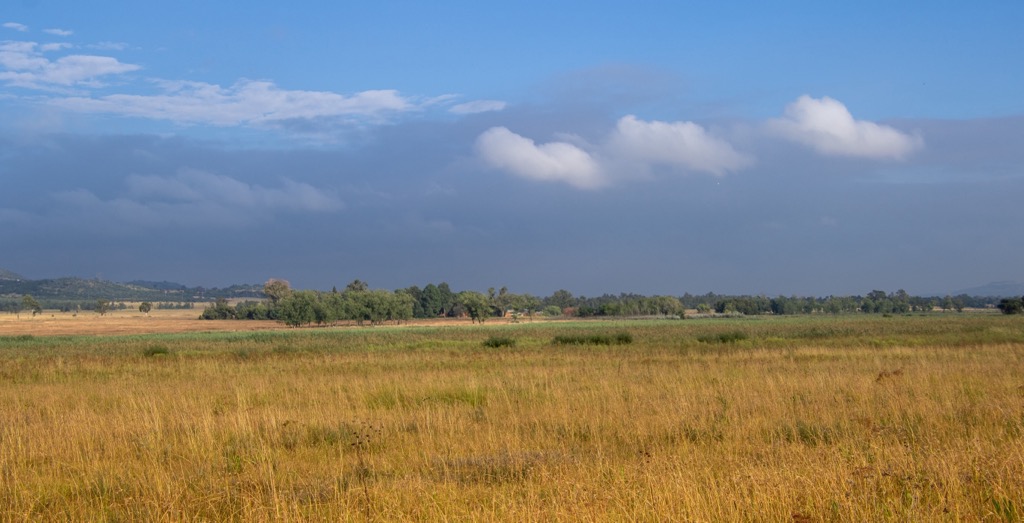
Patches of the savanna biome are present in certain areas, particularly towards the north and in sheltered valleys. This biome features a mix of grasses with scattered trees and shrubs. Notable tree species in the savanna include the sweet thorn, buffalo thorn, and marula. Although not native, Jacaranda trees, introduced from South America, are iconic in Tshwane, especially during spring when they bloom with striking purple flowers. Indigenous trees like the white stinkwood, Karee, and wild olive are also prominent in the area.
The grasslands and savannas support wildlife such as the common duiker, steenbok, and springbok. Tshwane's varied habitats and water bodies attract a rich birdlife, including species like the black eagle, African fish eagle, and various hawks and owls.
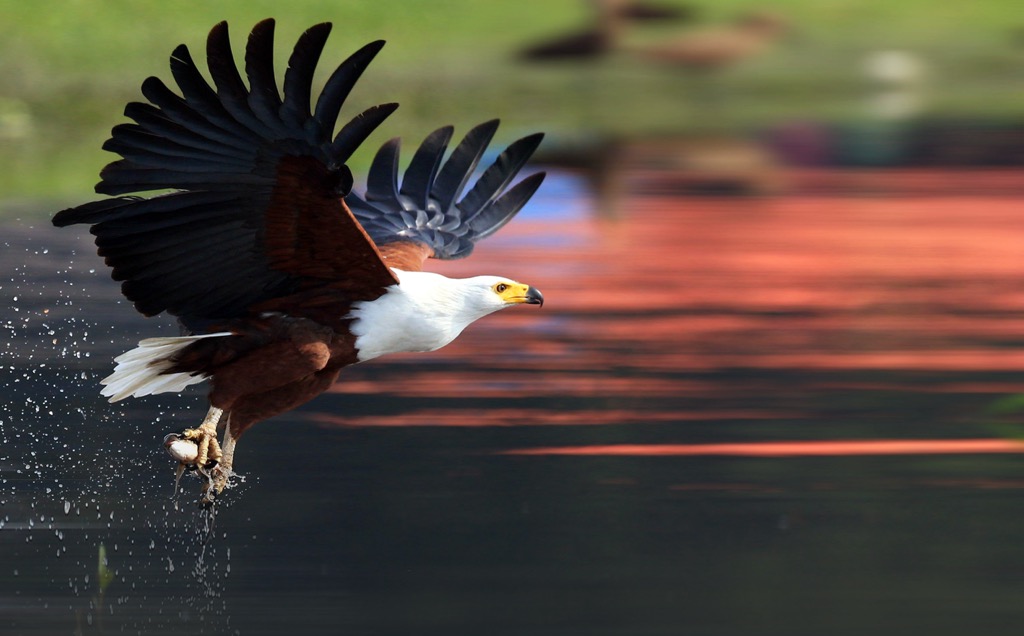
Before European colonization, Tshwane was home to indigenous groups such as the Ndebele and, later, the Tswana people. These communities established settlements, practiced agriculture, herded cattle, and traded with other African groups.
The British annexation of the Transvaal in 1877 sparked the First Boer War (1880-1881), followed by the Second Boer War (1899-1902), which ended with British victory and the incorporation of the Transvaal into the British Empire. Pretoria became the administrative capital of the newly established Union of South Africa in 1910.
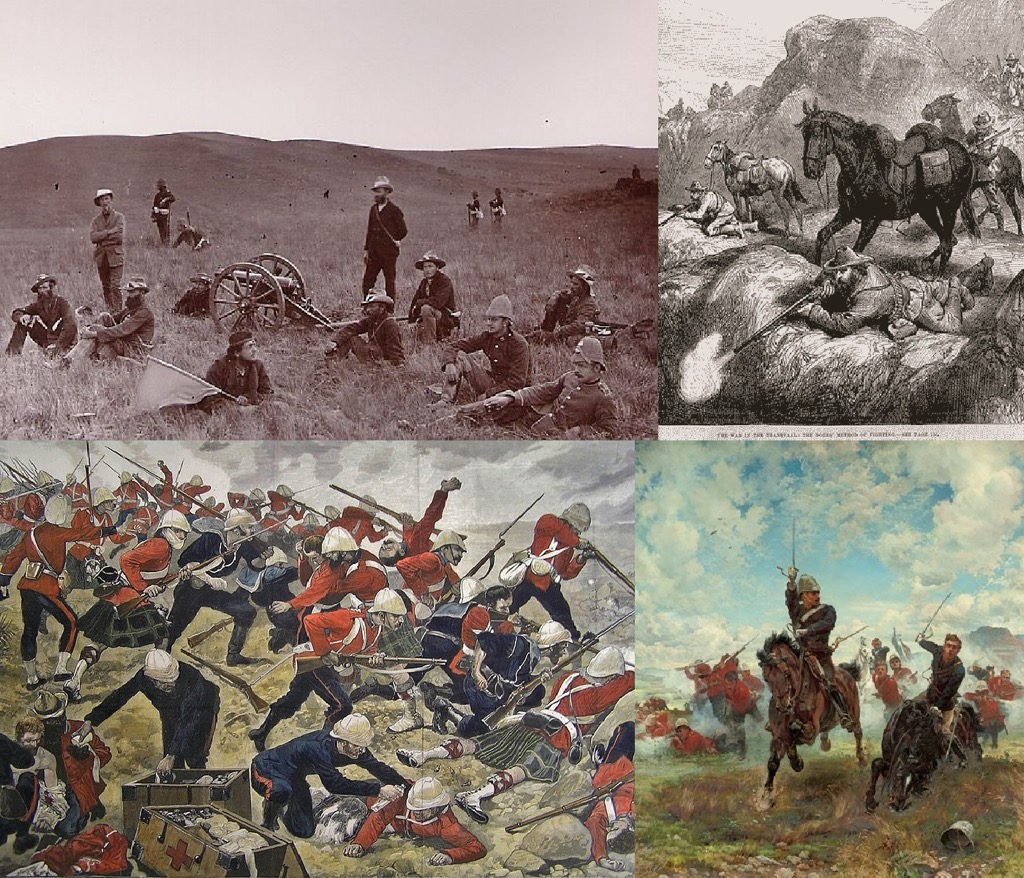
During the apartheid era, starting in 1948, Pretoria became the center of the apartheid government, where policies of racial segregation were formulated and enforced. The Sharpeville Massacre in 1960 and subsequent anti-apartheid resistance highlighted the intense struggles nationwide, with Pretoria often being a focal point for both government oppression and resistance movements.
The end of apartheid brought significant changes. In 2000, the City of Tshwane Metropolitan Municipality was formed, merging Pretoria with surrounding municipalities to create a larger metropolitan area. The name Tshwane was chosen to embrace a more inclusive identity and honor the area's pre-colonial heritage. One of the municipality’s goals is to address spatial and economic inequalities inherited from apartheid.
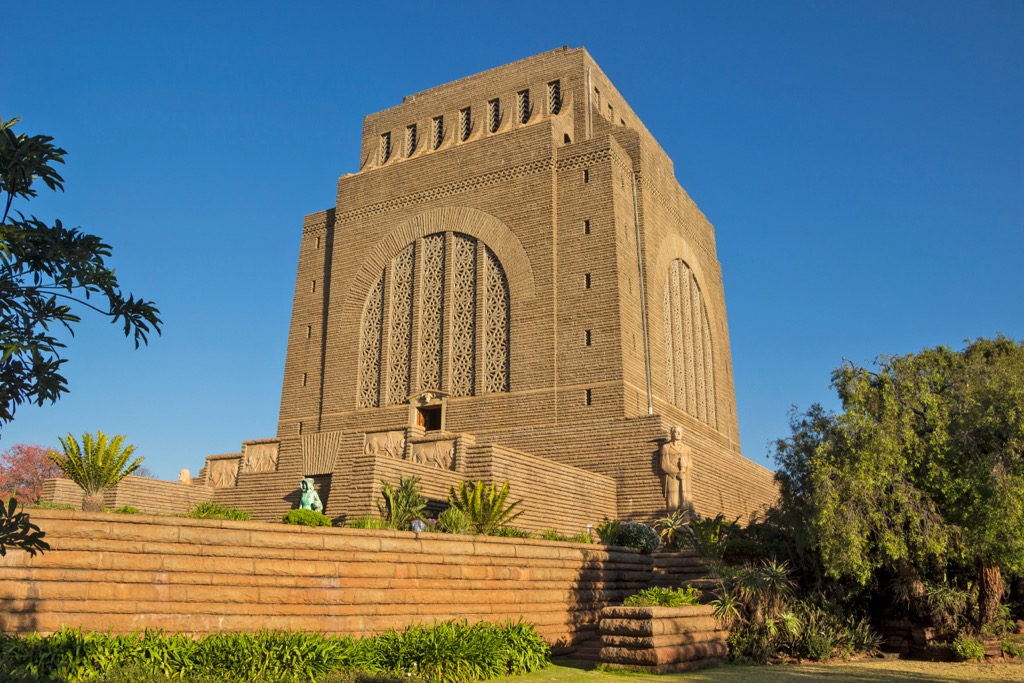
The Hennops Hiking Trails are situated in the Hennops River Valley within the City of Tshwane. The trail reveals historical sites, including old mines and remnants of the area's cultural heritage, like ancient Ndebele kraals and artifacts. En route, hikers can admire river vistas, natural bushveld, and rugged mountains.
The area offers routes with various lengths and difficulties, such as the Krokodilberg Trail (2.5 km / 1.5 mi), Zebra Trail (5 km / 3 mi), and the longer Dassie Trail (10 km / 6 mi). Highlights include the river crossings, where hikers can choose between a suspension bridge or a cable car over the winding Hennops River, and panoramic views of Hartbeespoort Dam, the Magaliesberg hills of Hennopsriver, Skruweberg, and Aalwynkop.
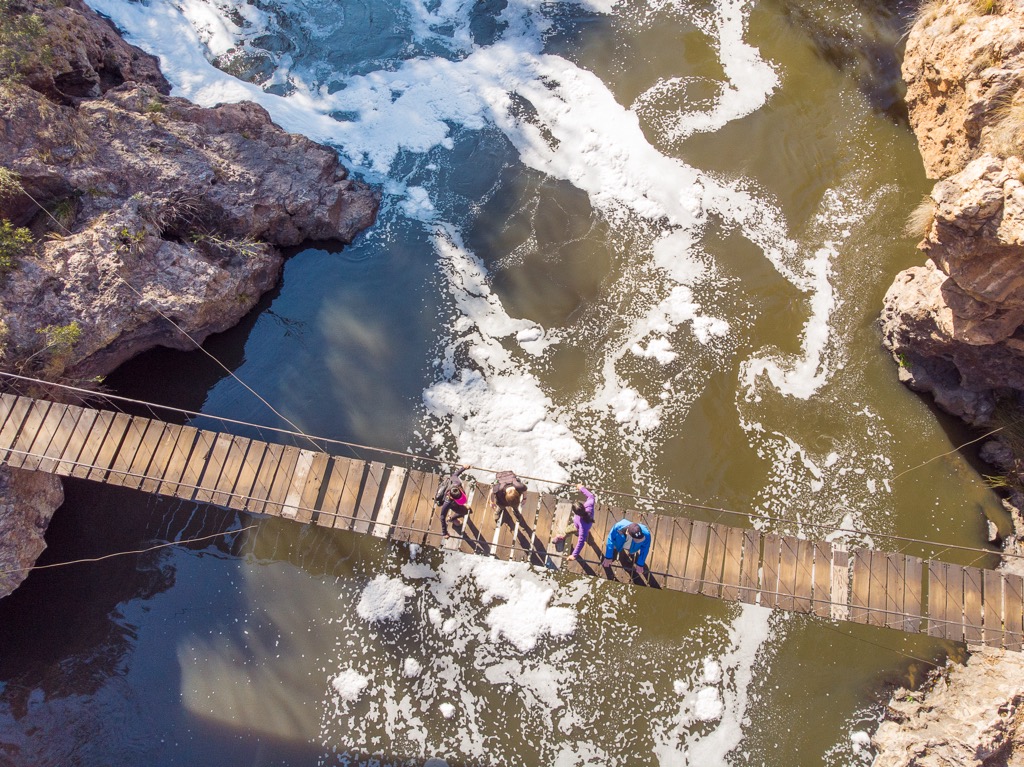
The Tswaing Meteorite Crater Trail lies 40 km (25 mi) northwest of Pretoria and is estimated to be around 220,000 years old. In addition to striking views of the Tswaing Meteor Impact Crater, hikers encounter remnants of ox-wagon roads and a salt mining factory. The trail features gentle inclines and declines, leading to the crater floor and along the lake’s southwestern perimeter.
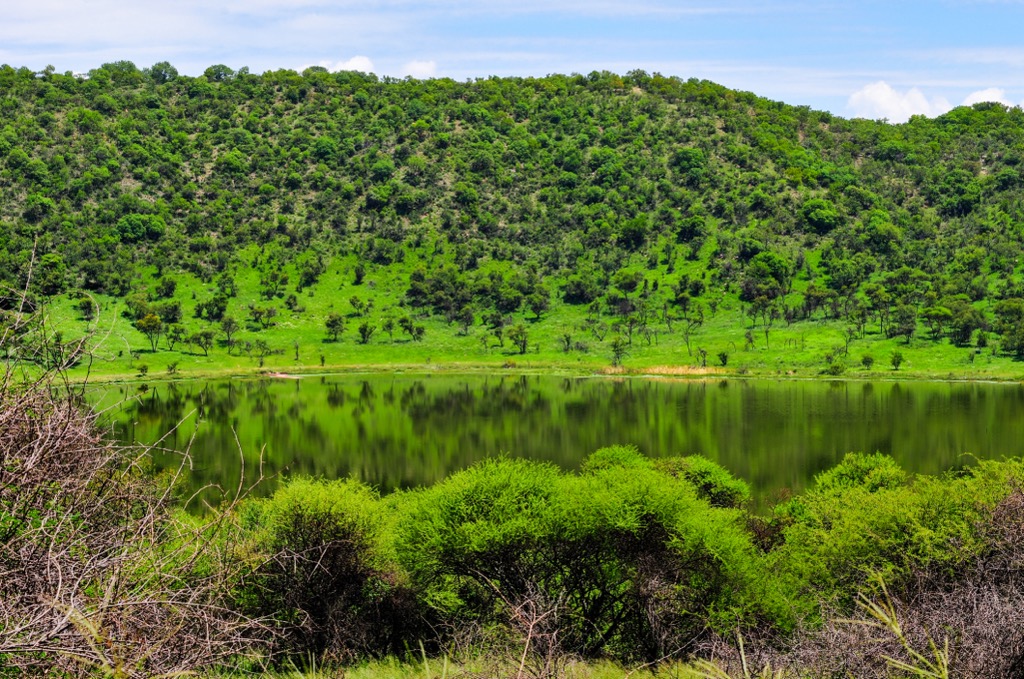
Groenkloof Nature Reserve, situated on the southern side of Pretoria, is Africa’s first game sanctuary. The reserve offers a variety of hiking trails that cater to different preferences and fitness levels. The Red Hiking Trail (3.5 km), featuring minimal elevation, is ideal for families and those seeking a leisurely walk. Similarly, the White Hiking Trail (4 km) on the left side of the reserve offers an easy hike at a moderate distance. For more adventurous hikers up for a challenge, the Yellow Hiking Trail (10.5 km) provides rigorous hikes and rewarding views.
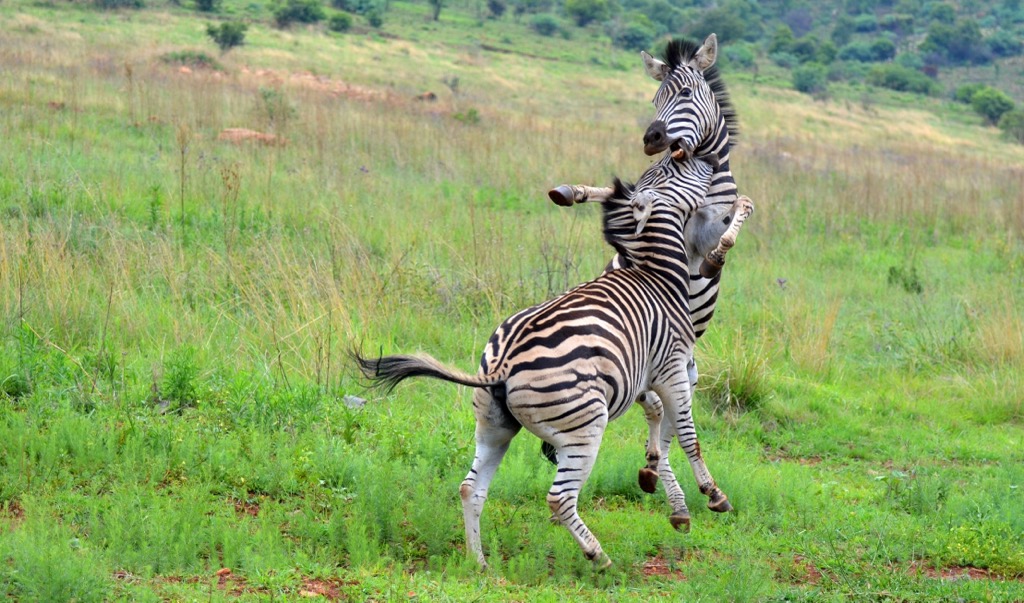
The Wonderboom Nature Reserve features diverse hiking trails for outdoor enthusiasts. The Wonderboom Hiking Trail spans approximately 4 km (2.4 mi) with an elevation gain of 211 meters (692 feet), encircling the renowned Wonderboom fig tree. Offering scenic views and showcasing unique flora, it's ideal for those seeking a shorter hike. Covering 2.8 km (1.7 mi), the Fort Trail leads to the ruins of the Wonderboom fort along the Magaliesberg ridge. At 1430 meters (4,692 ft), this trail combines historical interest with rugged terrain, providing varying lengths and scenic ridge views.
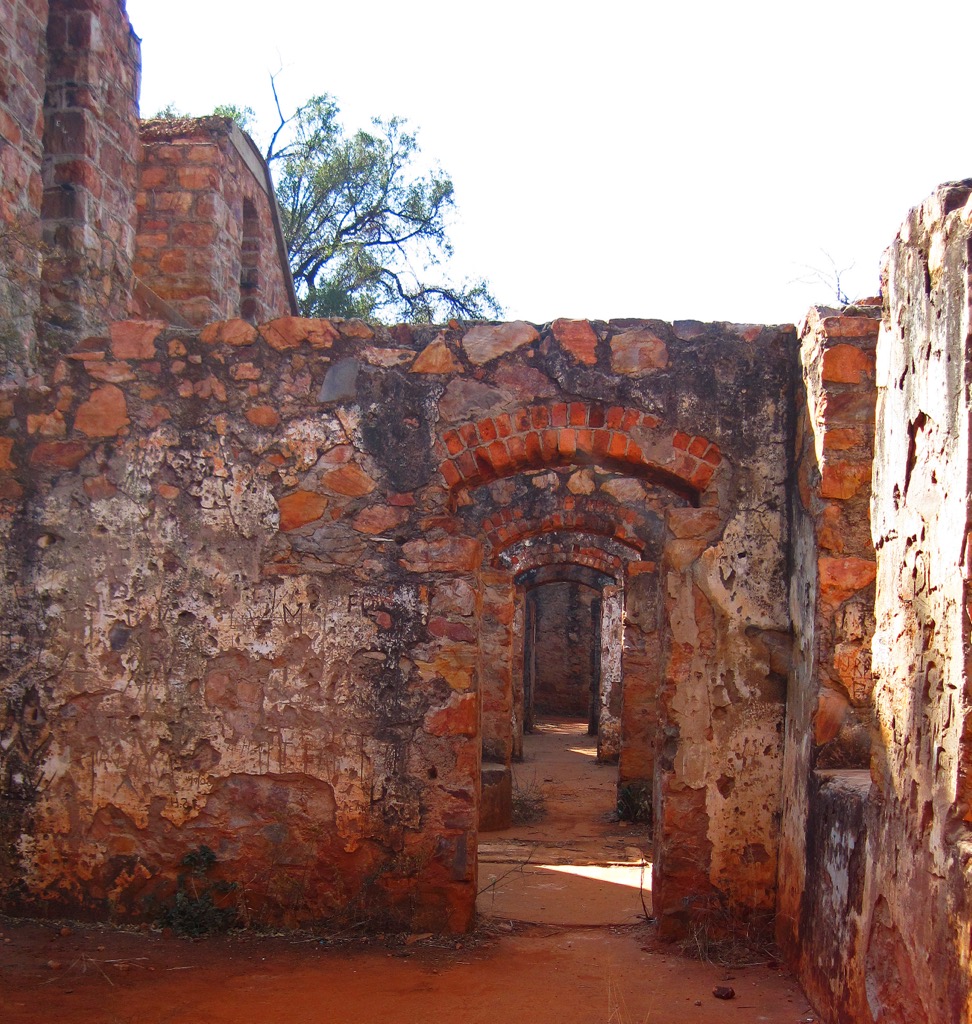
Mamelodi is a large township located to the northeast of Pretoria. It is known for its vibrant culture and community spirit. Points of interest include the Mamelodi Heritage Route, a trail highlighting the area's rich cultural and historical landmarks, and the University of Pretoria's Mamelodi Campus.

Hatfield is known for its youthful energy, mainly due to the presence of the University of Pretoria. It has a vibrant nightlife with numerous bars, clubs, and restaurants catering to students and young professionals. The Hatfield Gautrain Station provides quick and efficient transport links to Johannesburg and OR Tambo International Airport.
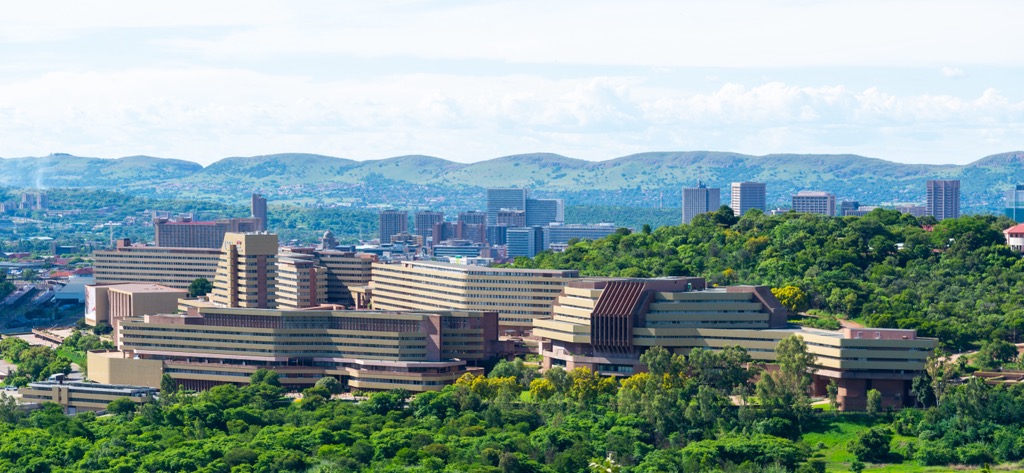
Arcadia is renowned for its diplomatic presence, with numerous embassies and high commissions. It is also home to Loftus Versfeld Stadium, a major sports venue hosting rugby and soccer matches, and the Union Buildings, which offer panoramic city views.

Explore City of Tshwane Metropolitan Municipality with the PeakVisor 3D Map and identify its summits.








